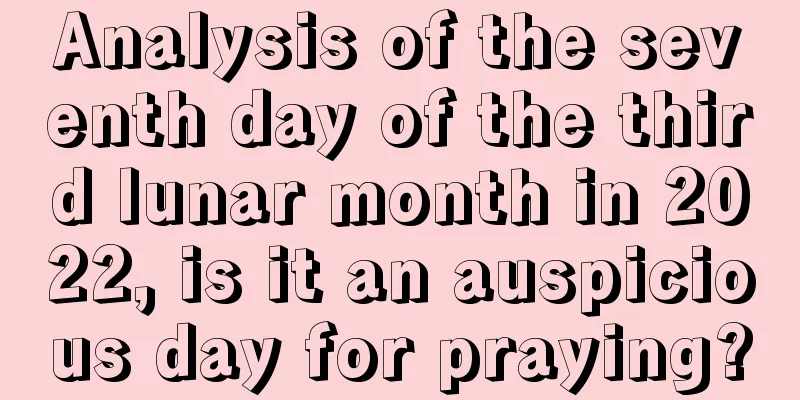Does March 3 refer to the lunar calendar or the new calendar? Customs of different places

In our country, the third day of March every year is a day full of festive atmosphere. It is a traditional festival of many ethnic groups, such as the Zhuang ethnic group’s March 3rd Singing Festival. So, does March 3rd refer to the lunar calendar or the new calendar? What are the customs in different places? March is the beautiful month of spring. We all know that the climate in spring is warm and moderate, all things begin to sprout, and the climate is changeable, with sudden changes from warm to cold. Shuimoxiansheng.com lists for you the festivals and solar terms in March of the lunar calendar in 2020!Does March 3 refer to the lunar calendar or the new calendar?March 3rd refers to the third day of the third month in the lunar calendar. In fact, the third day of the third lunar month is a traditional festival for many ethnic groups in China. For example, it is the birthday of Buluotuo, the ancestor of the Zhuang nationality, the Shangsi Festival of the Han nationality, and the Ganba Festival of the Yao nationality.In addition, the third day of the third lunar month is also a traditional festival for the Dong, Buyi, She, Li, Tujia, Tu, Miao and other ethnic groups. The Han ethnic group's Shangsi Festival has the following sayings: worship ancestors on March 3rd, worship Xuanyuan on March 3rd, and worship Chiyou on March 3rd. March 3rd is particularly important to the Zhuang ethnic group, so the Guangxi Zhuang Autonomous Region has designated March 3rd as a legal holiday, and all citizens in the autonomous region have a two-day holiday. Customs of different places——Zhuang Nationality <br /> Many people only know about the Zhuang nationality’s “March 3rd” customs, which include singing and talking about love. In fact, there are many Zhuang nationality’s “March 3rd” customs, such as grabbing firecrackers, throwing embroidered balls, and eating five-color glutinous rice, which are also interesting festival customs.——Dong Nationality <br /> The Dong nationality’s “March 3rd” festival is also known as the “Sowing Festival”, “Onion-asking Festival” and “Fireworks and Fireworks Festival”. According to the Dong legend, in ancient times they always regarded the flowering of tung trees as the rice planting festival. But one year the tung trees did not bloom, and as a result the farming season was missed, so they had to flee to the Baojing area. In order to learn from past lessons, every March 3rd people play the reed pipe and sing, visit relatives and friends, and remind each other that it is time to get busy with farm work. The Dong ethnic group often holds activities such as grabbing firecrackers, bullfighting, horse fighting, singing, and stepping on the hall on March 3rd, so it is also called the "Firecracker Festival." ——Yao Nationality <br /> The Yao Nationality’s March 3rd Festival is held to commemorate this national hero. People named this day March 3rd, also known as the Ganba Festival. Every year before March 3rd, Yao men go to Laolin a week in advance to hunt and kill wild animals, go to the river to catch fish and shrimps, and roast them and take them home to distribute them among households so that they can share the joy of the harvest. Women went up the mountain to pick indigo leaves and other natural dyes, boiled them in water and dyed them into glutinous rice in four colors: red, yellow, blue and purple, to offer to Pangu. On the day of the festival, the Yao people put down their farm work and take a day off together. The men read scriptures, drink and have fun, while the girls and boys go to the barren hills and woods near the village to sing, play and talk about love. ——She Nationality <br /> The She Nationality regards March 3rd as the birthday of rice, and every family eats black rice. The legend goes that in the Tang Dynasty, Lei Wanxing, a hero of the She ethnic group, led an uprising army to fight against the encirclement and suppression by government troops. The army used black apples to satisfy their hunger and boosted their morale. They successfully broke through the encirclement on March 3 and won battle after battle. To commemorate this event, the She people eat black rice and sing songs at a gathering on March 3rd every year. Among the She people, March 3rd is an important festival that can be compared with the Spring Festival. On this day, every family slaughters animals and offers sacrifices to their ancestors. Many families often choose this day to hold their wedding. During the festival, people go to the dance floor to perform the torch dance, wooden clap and sword dance, bamboo pole dance, dragon lantern dance, lion dance and fish lantern dance. There are also She ethnic minority folk sports such as asking for stools, manipulating stone steps, balancing sticks on the belly, manipulating poles, and driving wild boars. ——Li Nationality <br /> March 3 of the lunar calendar is a traditional auspicious festival for the Li people to remember their ancestors, celebrate new life, praise life, and pursue love. In 1984, the Standing Committee of the Guangdong Provincial People's Congress and the Guangdong Provincial People's Government agreed to the report of the former Standing Committee of the Hainan Li and Miao Autonomous Prefecture People's Congress and the former People's Government of Hainan Li and Miao Autonomous Prefecture, and officially designated the third day of March as a traditional festival of the Hainan Li people. On this day, people get up early. Women are busy pounding glutinous rice and preparing food for the festival. Girls go up the mountain to pick leaves for dyeing rice. Men go up the mountain to hunt with dogs and go into the water to catch fish. Every household kills chickens, buys meat and prepares wine. The girls put on their best clothes, wear gold and silver, and sing and dance to celebrate the annual March 3rd Festival. ——Tujia people <br /> March 3rd of the Tujia people is their "Valentine's Day", also known as "Daughter's Day". On the day of the festival, young men and women dressed in new clothes gathered from all directions. The clothing of women who are looking for a good husband is very distinctive. They wear a long gown with a left opening and short wide sleeves with many lace edges, and a pleated long skirt with many layers, which is long inside and short outside. They pretend to go to the market to sell local products and wait for their ideal man to appear. Unmarried men who are looking for a good spouse carry an empty basket on their backs and pretend to go shopping. If a man likes a woman, he will go up to her and "shop". If the woman likes the "shopping" man, she will sell her local specialties at a low price to show her willingness to marry him. Then they will leave the busy city and choose a quiet place to express their feelings to each other. ——Hmong The "March 3" Miao Love Song Festival is a traditional festival of the local Miao compatriots. During the event, villagers working outside, married women and young men and women from dozens of neighboring villages will gather here to celebrate. Therefore, the "March 3" Love Song Festival is not only a festival for villagers to worship their ancestors and reunite with relatives and friends, but also a beautiful day for young people in the village to talk about love. |
Recommend
Does being born in the beginning of winter necessarily mean a pure yin fate? What is the auspiciousness or inauspiciousness of the beginning of winter in 2021?
We often hear some people say that their horoscope...
What is the lucky star for people born on November 8, 2019, the beginning of winter, at the hour of Xu?
What is the lucky star for people born on November...
How about the 27th day of the seventh lunar month in 2018? Is it a good time to travel?
Introduction: China has been a traditional country...
What does the Lantern Festival mean? Is the fifteenth day of the first lunar month Chinese Valentine's Day?
The Lantern Festival is on the fifteenth day of th...
When to give birth during Christmas? Why is Christmas the peak time for pregnancy?
The first thing to do after getting pregnant is to...
What is the fate of a baby girl born on the 14th day of the 10th lunar month? Born to be a lucky wife?
Introduction: Each person’s birth time is one of t...
Do people born on the beginning of winter in 2020 have a strong life? What's your zodiac sign if you were born on the day of Beginning of Winter?
Birth determines the development of our destiny an...
How many days after Qingming Festival can I move in 2022? Is moving furniture appropriate?
We are busy with work and usually have little time...
Can I get a haircut during the Grain Rain season in 2022? Recommended auspicious days for haircuts before and after Grain Rain
You also need to choose a good time to get a hairc...
How often do National Day and Mid-Autumn Festival overlap? Is it a good time to travel during National Day in 2020?
Introduction: It’s the time when National Day and ...
Is August 7, the day after the autumnal equinox in 2020, suitable for marriage? Lunar August wedding auspicious day
Introduction: It is also necessary to choose an au...
Is the beginning of winter on the third day of October 2021 a good day? Is it suitable for traveling?
With the arrival of the tenth month of the lunar c...
What kind of fish should lazy people raise? The easiest Feng Shui fish to raise is here
Introduction: As a lazy person, the editor knows ...
What is the most suitable gift for leaders during the Dragon Boat Festival in 2017?
Introduction: The Dragon Boat Festival is coming i...
Can I go out at night during the Cold Clothes Festival? The Rabbit Year: Cold Clothes Festival
The Cold Clothes Festival is popular in the north....









